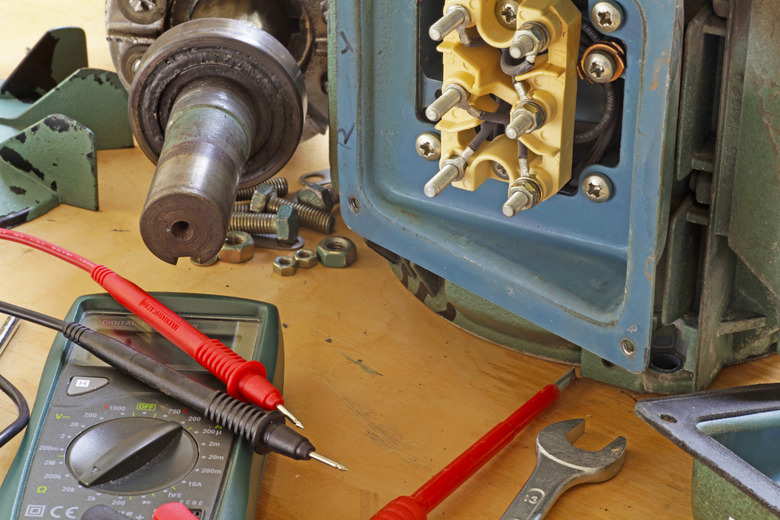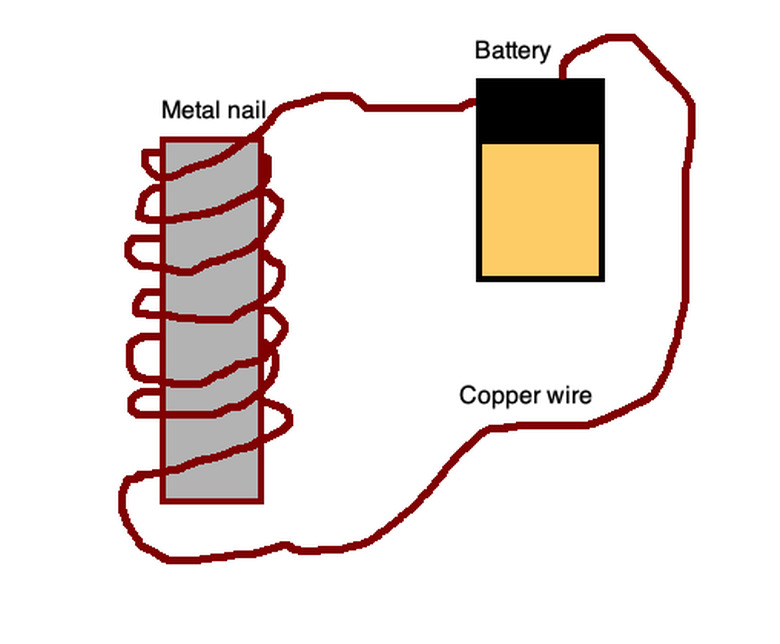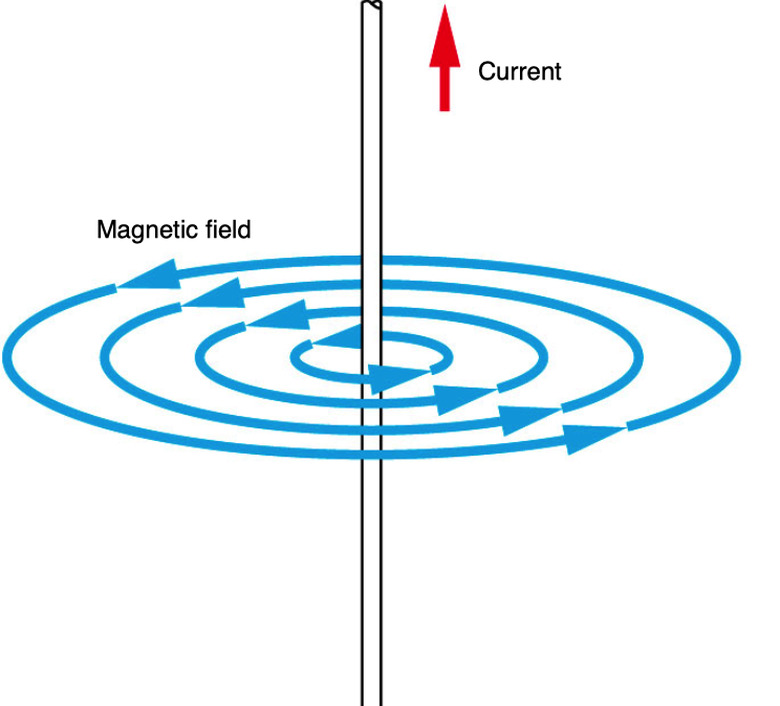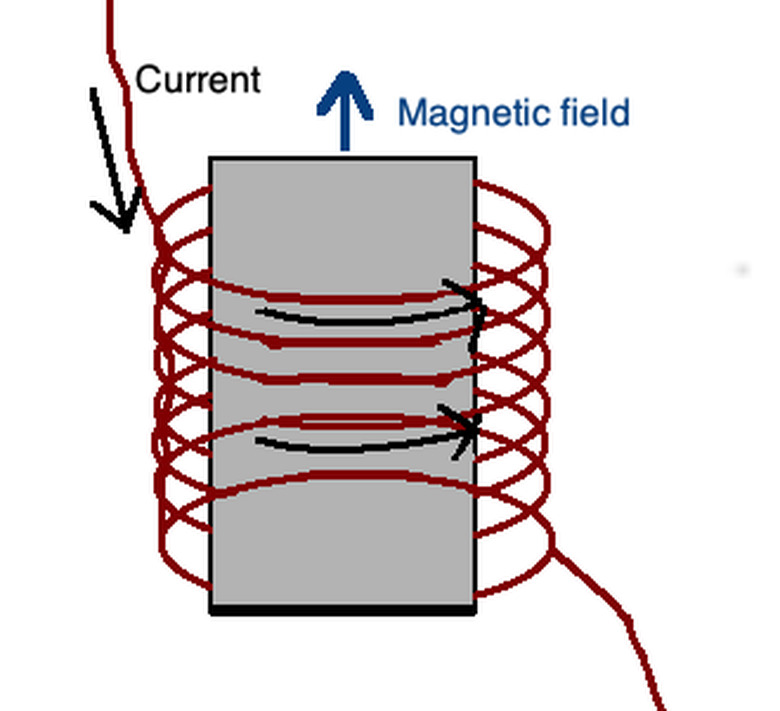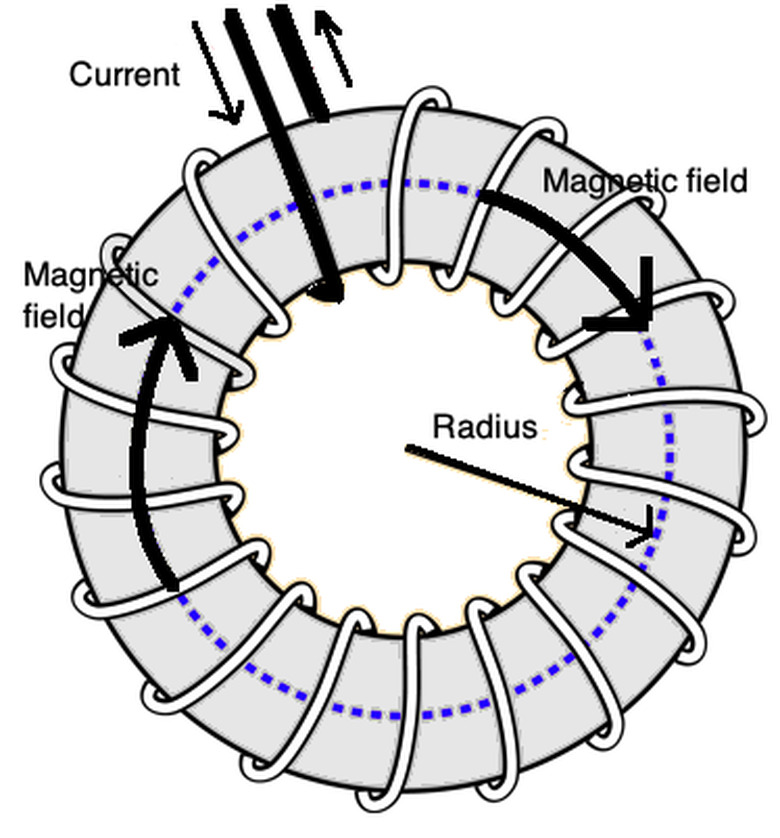How To Build An Electromagnetic Field Generator
Electromagnetic phenomena are everywhere from your cell phone's battery to the satellites that send data back to Earth. You can describe the behavior of electricity through electromagnetic fields, regions around objects that exert electric and magnetic forces, which are both part of the same electromagnetic force.
Because the electromagnetic force is found in so many applications in everyday life, you can even build one using a battery and other objects such as copper wire or metal nails lying around your house to demonstrate these phenomena in physics for yourself.
Build an EMF Generator
Build an EMF Generator
TL;DR (Too Long; Didn't Read)
You can build a simple electromagnetic field (emf) generator using copper wire and an iron nail. Wrap them around and connect them to an electrode current source to demonstrate the power of the electric field. There are many possibilities you can make for emf generators of varying size and power.
Building an electromagnetic field (emf) generator requires a solenoidal coil of copper wire (a helix or spiral shape), a metal object such as an iron nail (for a nail generator), insulating wire and voltage source (such as a battery or electrodes) to emit electric currents.
You may optionally use metal paper clips or a compass to observe the effect of the emf. If the metal object is ferromagnetic (such as iron), a material that can be easily magnetized, it will be much, much more effective.
1. Place the materials on a nonconducting surface such as wood or concrete. 2. Coil the copper wire as tightly as you can around the metal object until it's completely covered. The more coils, the stronger the field generator will be.
3. Clip the copper wire so that there are small parts of it from the head and the ends of the metal object. 4. Connect one end of a piece of insulated wire to the copper protruding from the head of the metal object. Connect the other end of the insulated wire to one end of the voltage source on the variable power supply. 5. Then, connect one end of the insulated wire to the source on the variable power supply. 6. Place a few paper clips near the metal object as it lies on the surface. 7. Set the dial on the variable power supply to 0 volts. 8. Plug the power supply in and turn it on. 9. Slowly turn the voltage dial up and watch the paper clips. You will see them react to the magnetic field from the metal object as soon as it is strong enough from the nail generator. 10. Use a compass in the middle to note the direction of the electromagnetic field. The compass needle should align with the axis of the coil when the current is flowing.
Physics of EMF generators
Physics of EMF generators
Electromagnetism, one of the four fundamental forces of nature, describes how an electromagnetic field created from the flow of electric current arises.
When an electric current flows through a wire, the magnetic field increases with the coils of the wire. This lets more current flow through a smaller distance or in smaller paths that are closer to the metal nail. When current flows through a wire, the electromagnetic field is circular around the wire.
When current flows through the wire, you can demonstrate the direction of the magnetic field using the right-hand rule. This rule means that, if you place your right thumb in the direction of the wire's current, your fingers will curl in the direction of the magnetic field. These rules of thumb can help you remember the direction that these phenomena have.
The right-hand rule also applies to the solenoid shape of the current around the metal object. When current travels in loops around the wire, it generates a magnetic field in the metal nail or other object. This creates an electromagnet that interferes with the compass direction and can attract metal paper clips to it. This type of electromagnetic field emitter works differently from permanent magnets.
Unlike permanent magnets, electromagnets need an electric current through them to give off a magnetic field for their uses. This allows scientists, engineers and other professionals to use them for a wide array of applications and heavily control them.
Magnetic Field of EMF Generators
Magnetic Field of EMF Generators
The magnetic field for an induced current in the solenoid shape of the electromagnetic can be calculated as
\(B=\mu_0 nL\)
in which B is the magnetic field in Teslas, μ0 (pronounced "mu naught") is the permeability of free space (a constant value 1.257 x 10-6), L is the length of metal object parallel to the field and n is the number of loops around the electromagnet. Using Ampere's Law,
\(B=\frac{\mu_0 I}{L}\)
you can calculate the current I (in amps).
These equations depend closely on the geometry of the solenoid with the wires wrapping around as close as possible around the metal nail. Keep in mind the direction of current is opposite the flow of electrons. Use this to figure out how magnetic field should change and see if the compass needle changes as you would calculate or determine using the right-hand rule.
Other EMF Generators
Other EMF Generators
Ampere's Law changes depends on the geometry of the emf generator. In the case of a toroidal, donut-shaped electromagnet, the field
\(B=\frac{\mu_0 nI}{2\pi r}\)
for n number of loops and r radius from center to the center of the metal objects. The circumference of a circle (2 π r) in the denominator reflects the new length of the magnetic field that takes a circular shape throughout the toroid. The shapes of emf generators let scientists and engineers harness their power.
Toroidal shapes are used in transformers use the coils wound around them in different layers such that, when a current is induced through it, the resulting emf and current that it creates in response transfers power between different coils. The shape lets it use shorter coils that reduce the losses to resistance or losses due to the way the currents are wound. This makes toroidal transformers efficient in how they use energy.
Electromagnet Uses
Electromagnet Uses
Electromagnets can range in a large amount of applications from industrial machinery, computer components, superconductivity and scientific research itself. Superconductive materials achieve virtually no electrical resistance at very low temperatures (close to 0 Kelvin) that can be used in scientific and medical equipment.
This includes magnetic resonance imaging (MRI) and particle accelerators. Solenoids are used for generating magnetic fields in dot matrix printers, fuel injectors and industrial machinery. Toroidal transformers in particular also have uses in the medical industry for their efficiency in creating biomedical devices.
Electromagnets are also used in musical equipment such as speakers and earphones, power transformers that increase or decrease current voltage along power lines, induction heating for cooking and manufacturing and even magnetic separators to sort magnetic materials from scrap metal. The induction for heating and cooking in particular relies on how an electromotive force produces a current in response to a change in magnetic field.
Finally, maglev trains use a strong electromagnetic force to levitate a train above a track and superconducting electromagnets to accelerate to high-speeds at fast, efficient rates. Aside from these uses, you can also find electromagnets used in applications like motors, transformers, headphones, loudspeakers, tape recorders and particle accelerators.
Cite This Article
MLA
Ather, S. Hussain. "How To Build An Electromagnetic Field Generator" sciencing.com, https://www.sciencing.com/build-electromagnetic-field-generator-6391824/. 27 December 2020.
APA
Ather, S. Hussain. (2020, December 27). How To Build An Electromagnetic Field Generator. sciencing.com. Retrieved from https://www.sciencing.com/build-electromagnetic-field-generator-6391824/
Chicago
Ather, S. Hussain. How To Build An Electromagnetic Field Generator last modified March 24, 2022. https://www.sciencing.com/build-electromagnetic-field-generator-6391824/
